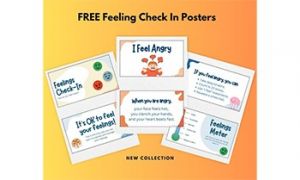In the wake of recent news, early childhood settings face a moral and professional imperative: to go beyond compliance and embed emotionally intelligent, culturally safe practices that truly protect children. This article introduces the Four V’s Framework—Visibility, Voice, Validation, and Vigilance, as a holistic model for safeguarding in early childhood education.
Visibility: Making Safety Observable
Visibility is more than physical presence—it’s about creating environments where interactions are transparent, predictable, and affirming.
Implementation Strategies:
- Architectural design: Use glass panels, open doors, and modular layouts to ensure visibility without compromising dignity.
- Symbolic signage: Display child-friendly icons (e.g., a lantern or guardian owl) to mark “safe zones” and normalize observation.
- Observation logs: Include emotional tone, child engagement, and relational cues—not just compliance checkboxes.
Voice: Empowering Children to Speak and Be Heard
Children must be given tools and language to express their feelings, preferences, and discomforts. Voice is a right, not a privilege.
Implementation Strategies:
- Emotion cards and wheels: Let children point to or draw how they feel.
- Consent-based routines: Ask before assisting with care tasks—“Can I help you with your shoes?”
- Child-led documentation: Use visual diaries or “My Safe Space” templates to let children co-create their environment.
Validation: Affirming Identity, Emotion, and Experience
Validation means acknowledging children’s emotions and experiences with empathy. It’s the antidote to silence and shame.
Implementation Strategies:
- Affirming language: Train staff to respond with phrases like “You were brave to tell me that.”
- Cultural storytelling: Use diverse books, puppets, and rituals that reflect children’s identities.
- Staff debriefs: Normalize emotional check-ins and reflective supervision to prevent burnout and secondary trauma.
Vigilance: Staying Alert, Responsive, and Trauma-Informed
Vigilance is proactive—not reactive. It requires emotional intelligence, trauma literacy, and a culture of accountability.
Implementation Strategies:
- Daily well-being check-ins: Use visual planners or symbolic mascots to track emotional states.
- Escalation protocols: Ensure staff know how to report concerns safely and swiftly.
- Peer mentoring: Pair new educators with experienced mentors trained in trauma-informed practice.
Integrating with Existing Policies
The Four V’s Framework complements existing policies like Four Eyes, Mandatory Reporting, and Child Safe Standards. It adds emotional depth, symbolic clarity, and relational trust to structural safeguards.
Suggested Tools:
- Modular “Four V’s” posters for staff rooms and classrooms
- Visual planners that track visibility and child voice
- Sector diaries with reflective prompts tied to each V
Bridging the Four Eyes Policy with the Four V’s Framework
The Four Eyes Policy mandates that no adult should be alone with a child in situations that could compromise safety, requiring two adults to be present or observable during intimate care, secluded activities, or sensitive interactions.
While this policy strengthens structural safeguards, it can feel clinical or surveillance-heavy if not paired with emotionally intelligent practice. That’s where the Four V’s Framework comes in, adding warmth, relational depth, and child-centered meaning to the policy’s rollout.
Visibility → Reinforces Four Eyes
- Four Eyes ensures physical presence, but Visibility expands it to include emotional and symbolic transparency.
- Use glass panels, open layouts, and symbolic signage (e.g., “Safe Zone” icons) to normalize observation.
- Embed “Four Eyes Verified” checkboxes in documentation alongside emotional tone logs.
Voice → Humanizes Four Eyes
- Children may feel watched but not heard under Four Eyes alone.
- Introduce “I feel…” cards, emotion wheels, and safe word systems to let children express discomfort or preferences.
- Use child-led documentation to affirm agency—e.g., “My Safe Space” drawings or “Who helps me feel safe?” prompts.
Validation → Softens Four Eyes
- Four Eyes can feel punitive or mistrustful if not balanced with empathy.
- Train staff to use affirming language: “You were brave to speak up,” “I’m here to listen.”
- Include cultural storytelling, mascots, and rituals that reflect children’s identities and foster belonging.
Vigilance → Deepens Four Eyes
- Four Eyes prevents isolation, but vigilance ensures a proactive, trauma-informed response.
- Implement daily well-being check-ins, peer debriefs, and escalation protocols.
- Use symbolic planners or mascots to track emotional states and flag concerns early.
Integrated Practice Example
Imagine a child becomes withdrawn during toileting routines. Under Four Eyes, two adults are present but with the Four V’s:
- Visibility: The space is open and marked with a “Safe Zone” symbol.
- Voice: The child uses a visual diary to express discomfort.
- Validation: Staff respond with empathy and affirm the child’s courage.
- Vigilance: The concern is logged, escalated, and followed up with trauma-informed support.
By integrating the Four V’s into the Four Eyes Policy, early childhood settings can transform a reactive safeguard into a proactive culture of emotional safety. It’s not just about who’s watching—it’s about who’s listening, affirming, and protecting.
Children deserve more than policies—they deserve environments where they are seen, heard, affirmed, and protected. By embedding the Four V’s into daily practice, early childhood settings can move from fear to healing, from compliance to compassion.
Further Reading
Rebuilding Trust: Importance Of Reassuring Parents On Their Child's Safety
Four Eyes Policy
Keeping Children Safe: Practical Solutions in Light of the Melbourne Abuse Case







 As an Educator in Australia, your pay rate falls under the Children’s Services Award 2010. This award states the minimum amount that an employer can
As an Educator in Australia, your pay rate falls under the Children’s Services Award 2010. This award states the minimum amount that an employer can When working as a qualified Early Childhood Teacher (with a university degree) within a service, your rate of pay will come from the Educational Services
When working as a qualified Early Childhood Teacher (with a university degree) within a service, your rate of pay will come from the Educational Services When working as a Diploma Qualified Educator your pay rate is from the Children's Services Award 2010. This Award states your minimum rate of pay
When working as a Diploma Qualified Educator your pay rate is from the Children's Services Award 2010. This Award states your minimum rate of pay When working as a Cert 3 Qualified Educator, your pay rate is from the Children's Services Award 2010. This Award states your minimum rate of
When working as a Cert 3 Qualified Educator, your pay rate is from the Children's Services Award 2010. This Award states your minimum rate of Educational Leaders play a crucial role in their early childhood service by ensuring that the educational program aligns with best practices and supports the holistic
Educational Leaders play a crucial role in their early childhood service by ensuring that the educational program aligns with best practices and supports the holistic In early childhood education and care, ratios are more than a technicality—they are a frontline safeguard. Every child deserves responsive supervision, emotional connection, and developmental
In early childhood education and care, ratios are more than a technicality—they are a frontline safeguard. Every child deserves responsive supervision, emotional connection, and developmental With the new national child safety reforms kicking in on 1 September 2025, early childhood services like yours have a real opportunity to lead the
With the new national child safety reforms kicking in on 1 September 2025, early childhood services like yours have a real opportunity to lead the Here’s a comprehensive Mobile Phone and Smart Watch Policy tailored for early childhood education and care (ECEC) services in Australia, aligned with the latest 2025
Here’s a comprehensive Mobile Phone and Smart Watch Policy tailored for early childhood education and care (ECEC) services in Australia, aligned with the latest 2025 The Sea of Fish Challenge is a national initiative that invites children, educators, families, and communities to create and display fish artworks as a symbol
The Sea of Fish Challenge is a national initiative that invites children, educators, families, and communities to create and display fish artworks as a symbol Across the early childhood education and care sector, educators are sounding the alarm: current staffing ratios are insufficient to deliver safe, meaningful, and developmentally appropriate
Across the early childhood education and care sector, educators are sounding the alarm: current staffing ratios are insufficient to deliver safe, meaningful, and developmentally appropriate


